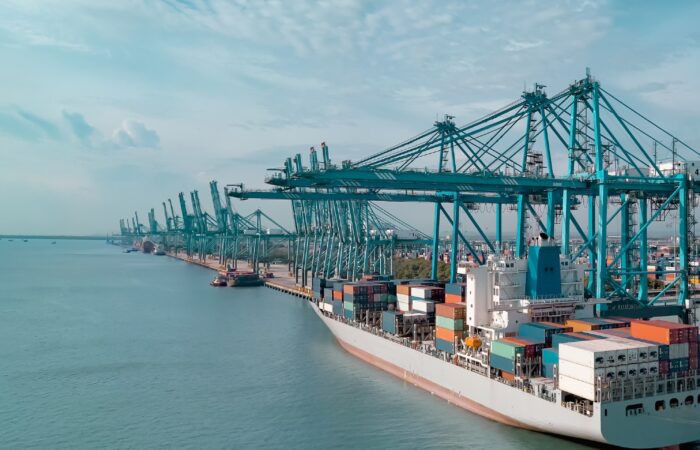
Logistics Optimization
What Is Logistics Optimization?
Logistics optimization is the process of improving supply chain efficiency by minimizing costs, reducing delays, and maximizing resource utilization. It involves route planning, inventory management, warehouse optimization, and demand forecasting.
Businesses use technology, data analysis, and automation to streamline transportation, distribution, and storage, ensuring timely deliveries and cost-effective operations. Effective logistics optimization enhances customer satisfaction, reduces waste, and boosts overall profitability.
Why Is Logistics Optimization Important?
Logistics optimization is crucial because it enhances efficiency, reduces costs, and improves customer satisfaction.
- Cost reduction: minimizes transportation, warehousing, and inventory costs through better planning
- Faster deliveries: optimizes routes and processes to ensure timely shipments
- Resource efficiency: reduces waste, fuel consumption, and labor costs
- Better inventory management: prevents overstocking and stockouts
- Increased customer satisfaction: ensures reliable and on-time deliveries
- Competitive advantage: streamlines logistics to make businesses more agile and cost-effective

Is There a Difference Between Logistics Optimization and Supply Chain Optimization?
The terms are often used interchangeably, but logistics optimization focuses on transportation, warehousing, and distribution. Supply chain optimization includes logistics, but is far broader in scope, and includes sourcing and production. The following table highlights some of the differences between the two types of optimization.
| Logistics Optimization | Supply Chain Optimization | |
| Objective | Improves efficiency in moving and storing goods | Enhances overall supply chain performance and resilience |
| Key Activities | Route planning, inventory management, warehouse optimization | Demand forecasting, supplier selection, production planning |
| Technology Used | GNSS tracking, warehouse automation, transport management systems | AI-driven analytics, ERP systems, blockchain for transparency |
| Impact | Reduces costs and delivery times | Ensures end-to-end efficiency, reducing bottlenecks and risks |
What Is Logistics Route Optimization and How Is It Done?
Logistics route optimization is the process of determining the most efficient paths for transporting goods. It aims to minimize travel time, fuel costs and delays, while maximizing delivery efficiency and resource utilization.
Route optimization typically follows a five-step process:
- Collect data: gather real-time traffic, weather, and delivery location data
- Deploy route planning software: use AI-powered tools, like GPS tracking and route optimization algorithms
- Run a constraints analysis: consider delivery windows, shipping capacity, global shipping restrictions, and fuel efficiency
- Implement dynamic adjustments: adapt routes in real time, based on port conditions and unexpected disruptions
- Monitor performance: track delivery times, fuel usage, and port efficiency for continuous improvement
What Are Some Ways Shippers Can Optimize Their Logistics Operations?
Inventory Management
Efficient inventory management prevents costly issues, like overstocking or stockouts. Shippers can use real-time tracking and automated inventory systems to monitor stock levels, forecast demand accurately, and replenish supplies efficiently. This ensures that goods are available when needed, reducing storage costs and improving order fulfillment rates.
Warehouse Optimization
Optimizing warehouse operations improves efficiency, reduces handling times, and lowers operational costs. Smart shelving systems, automation, and robotics can speed up order picking and packing processes. Additionally, Warehouse Management Software (WMS) helps shippers track inventory locations, optimize storage space, and reduce labor inefficiencies. Properly organized warehouses enable faster shipping and better customer service by ensuring that goods are processed and dispatched quickly.
Load Consolidation
Consolidating shipments allows shippers to maximize container capacity and reduce transportation expenses. Instead of sending multiple small shipments, businesses can combine freight from different orders into a single load, leading to fewer trips and lower per-unit shipping costs.
Technology Integration
Leveraging advanced logistics technologies enhances visibility and efficiency across the supply chain. Transportation Management Systems (TMS), Internet of Things (IoT) sensors, and real-time tracking solutions help shippers monitor shipments, optimize delivery schedules, and improve overall fleet management. Data analytics tools can also provide insights into operational inefficiencies, allowing businesses to make data-driven decisions and improve their logistics processes.
Carrier Selection
Choosing the right carrier is essential for balancing cost, speed, and service reliability. Shippers should evaluate carrier performance based on factors such as on-time delivery rates, pricing structures, and service coverage. Using multi-carrier shipping strategies allows businesses to compare options and select the most cost-effective and efficient transportation providers. Building strong relationships with reliable carriers can also lead to better service agreements and more flexible shipping solutions.
What Are the Biggest Challenges in Logistics Optimization?
Unpredictable events – such as natural disasters, geopolitical conflicts, labor strikes, and pandemics – can disrupt supply chains, causing delays and increasing costs. Companies must develop contingency plans, diversify suppliers, and leverage real-time data for proactive decision-making.
Fluctuating fuel prices, labor shortages, and increasing transportation costs also make logistics optimization challenging. Businesses should focus on fuel-efficient routing, load consolidation, and automation to control expenses and maintain profitability.
Finally, global trade regulations, customs policies, and environmental mandates vary across regions, making compliance difficult. Companies must stay updated on regulations, implement compliance management systems, and use AI-powered tracking tools to avoid penalties and delays.
What Role Does AI Play in Maritime Logistics Optimization?
Artificial intelligence (AI) is transforming maritime logistics by improving efficiency, reducing costs, and enhancing decision-making. It helps optimize vessel routes and more accurately tracks ocean freight’s arrival times.
Predictive Analytics for Route Optimization
AI analyzes weather patterns, ocean currents, and fuel efficiency to suggest the best shipping routes. This reduces transit times, fuel consumption, and operational costs.
Risk Assessment and Compliance
AI-powered platforms like Windward’s provide real-time risk analysis for maritime operations. The Windward Maritime AI™ platform detects potential compliance violations, sanctions risks, and fraudulent shipping activities, helping companies avoid costly penalties.
Port Congestion Management
AI predicts port congestion and suggests alternative docking options, reducing delays and improving supply chain efficiency. Windward, for example, uses machine learning to analyze port traffic patterns and optimize berthing schedules.












